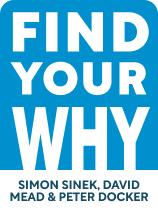

This article is an excerpt from the Shortform book guide to "Find Your Why" by Simon Sinek, David Mead, Peter Docker. Shortform has the world's best summaries and analyses of books you should be reading.
Like this article? Sign up for a free trial here .
How does idea sharing in the workplace benefit an organization? How can you inspire your team to get involved and share ideas?
Author Simon Sinek believes everyone, no matter their role or status, deserves to find fulfillment at work. According to Sinek, discovering the core purpose that inspires your team to do the work they choose to do will promote team engagement and idea sharing.
Read on to learn Sinek’s approach to encouraging team idea sharing in the workplace, including a thought-provoking exercise.
Idea Sharing With Teams: The Purpose Discussion
To promote idea sharing in the workplace, the team process of sharing your purpose involves validating your insights. However, this works on a much bigger scale and thus requires more steps.
To begin, leaders should invite people who didn’t participate in the team’s purpose discussion to a meeting. The authors suggest that you invite team members who are enthusiastic about participating because they’ll share that enthusiasm with others after the meeting, which will promote idea sharing in the workplace. (Shortform note: In The Tipping Point, Malcolm Gladwell explains that enthusiasm makes some people persuasive. Their enthusiasm makes others want to listen to their ideas.)
1. Introduce your purpose. Explain that the purpose statement came from the stories team members shared during the purpose discussion. Recount some of the stories. Then, share the purpose statement, reminding participants that the phrasing might not be perfect, but the meaning behind it and the action it invites them to take should resonate. Be alert to disagreement—if most participants feel unsure, you might need to repeat the purpose discussion.
(Shortform note: At this stage, you’re encouraging ownership of the purpose from people who didn’t participate in discovering it and therefore might be hesitant to adopt it. To help them get there, practice Extreme Ownership—embody the team’s purpose, model it, and always encourage further idea sharing in the workplace. Jocko Willink and Leif Babin recommend two practices to ensure you model the kind of ownership you expect from your team: 1) Make sure the purpose statement resonates with you and that you believe that it makes sense given the team’s strategy and history, and 2) keep an open mind to the disagreements people might have and listen to any concerns.)
2. Connect with the purpose and look ahead. At this stage, the authors suggest splitting participants into smaller groups. Ask them to share stories of when they felt proud to be a part of the team and how those moments reflected the organization’s purpose, as well as identify team members who personify the purpose. Bring the full group together to share their ideas. (Shortform note: Speaking about moments of pride and their alignment with your purpose inspires others to act in alignment with the Why. In The Power of Moments, Chip and Dan Heath argue that, when you take a courageous action, like living true to your organization’s purpose, that becomes a defining moment of pride. For people who witness your courage, it becomes a defining moment of inspiration.)
Next, ask the full group to brainstorm ways to use the purpose to propel the team forward. They should consider internal management and the products or services the team or company offers. (Shortform note: Beyond this session, you can encourage idea sharing in the workplace by applying the tools Ed Catmull shares in Creativity, Inc., like promoting candor, embracing failure, and being protective of new ideas.)
To close and encourage further idea sharing in the workplace, Sinek advises asking for volunteers to share the purpose with peers, be living examples of it, and bring one of the brainstorming ideas to life. (Shortform note: In The Tipping Point, Malcolm Gladwell offers guidelines on how to choose the right messengers. When people volunteer, keep an eye out for connectors (people with strong social networks), mavens (people who are adept at gathering and retaining information), and persuaders (people who are great at getting other people on board) and encourage them to take on some of the volunteer roles.)
Exercise: Determine Your Team’s Practices, or How
After using a purpose discussion to promote idea sharing in the workplace, try this exercise to help teams determine the How, or the methods that will help you accomplish your team’s Why, or purpose.
- Group the themes you set aside after writing your purpose statement until you have no more than five. Write those five themes in active and inspiring language that expresses your team’s unique How, or methods. For example, “build safe communities.”
- Elaborate on each How to make it more concrete. For instance, you could add the following clarifying statements to the example above:
- “We look out for our community members.”
- “We create safe spaces where everyone feels welcome.”
- “We seek opportunities for connection.”
- Make a list of your team’s values. What overlap do you see between your values and your How, or methods?

———End of Preview———
Like what you just read? Read the rest of the world's best book summary and analysis of Simon Sinek, David Mead, Peter Docker's "Find Your Why" at Shortform .
Here's what you'll find in our full Find Your Why summary :
- Simon Sinek’s steps to understanding and living your purpose and your organization’s
- How to create and write your purpose statement
- What to do after you find your Why: Determine your How






